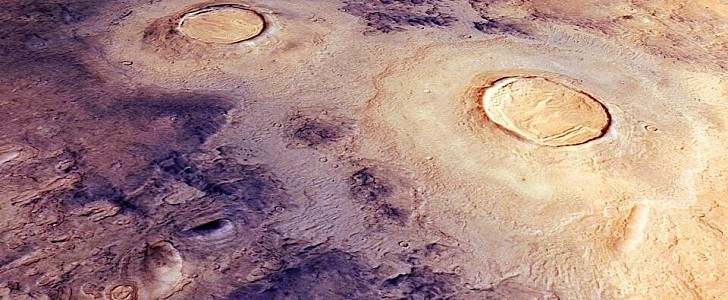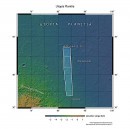One has to admit, despite fascinating and promising features our neighboring planet Mars is filled with, humans are not very creative in naming stuff there, as we generally stick to calling stuff as we see it.
Some terrain there looks like a spider? Let’s call it that, then. Does it look chaotic? Chaos it is. Does it resemble a human brain, for some reason? Well, what else can it be called, then?
You see, our human brains are affected by a lot of things. One of them would be pareidolia, which is the tendency to see familiar shapes and patterns where there are none, in an attempt to make sense of things.
Pareidolia is generally what governs our perception of the strange and beautiful Mars, and it is responsible for us seeing, for instance, brains on the surface of the planet. What governs our decision to name these features as we see them, that’s not entirely clear.
Brain terrain is the uncomplicate name our scientists have given to a feature on the Red Planet made up of patterns and ridges that are similar to those we know to exist on the surface of the human brain. There are many places like that over there, but today we’ll focus on a pic snapped by the European Space Agency’s Mars Express.
You’re looking at a portion of the Utopia region, the solar system’s largest known impact basin (some 3,300 km/2,050 miles across). Generally a very ice-rich region, it’s also the birthplace of many of these brains, concentrated around the second-largest crater shown in the pic.
Brain terrain shows up as the surface of the planet warped in a concentric pattern, usually resulted from the melting or sublimation of ice, which causes the surface to weaken over time and collapse. The ridges that form these shapes can be as high as five meters (16 feet).
The images released by ESA also show something called mantled deposits, layers of ice- and dust-rich material that millions of years ago could have fallen down to the surface in the form of snow.
You see, our human brains are affected by a lot of things. One of them would be pareidolia, which is the tendency to see familiar shapes and patterns where there are none, in an attempt to make sense of things.
Pareidolia is generally what governs our perception of the strange and beautiful Mars, and it is responsible for us seeing, for instance, brains on the surface of the planet. What governs our decision to name these features as we see them, that’s not entirely clear.
Brain terrain is the uncomplicate name our scientists have given to a feature on the Red Planet made up of patterns and ridges that are similar to those we know to exist on the surface of the human brain. There are many places like that over there, but today we’ll focus on a pic snapped by the European Space Agency’s Mars Express.
You’re looking at a portion of the Utopia region, the solar system’s largest known impact basin (some 3,300 km/2,050 miles across). Generally a very ice-rich region, it’s also the birthplace of many of these brains, concentrated around the second-largest crater shown in the pic.
Brain terrain shows up as the surface of the planet warped in a concentric pattern, usually resulted from the melting or sublimation of ice, which causes the surface to weaken over time and collapse. The ridges that form these shapes can be as high as five meters (16 feet).
The images released by ESA also show something called mantled deposits, layers of ice- and dust-rich material that millions of years ago could have fallen down to the surface in the form of snow.






